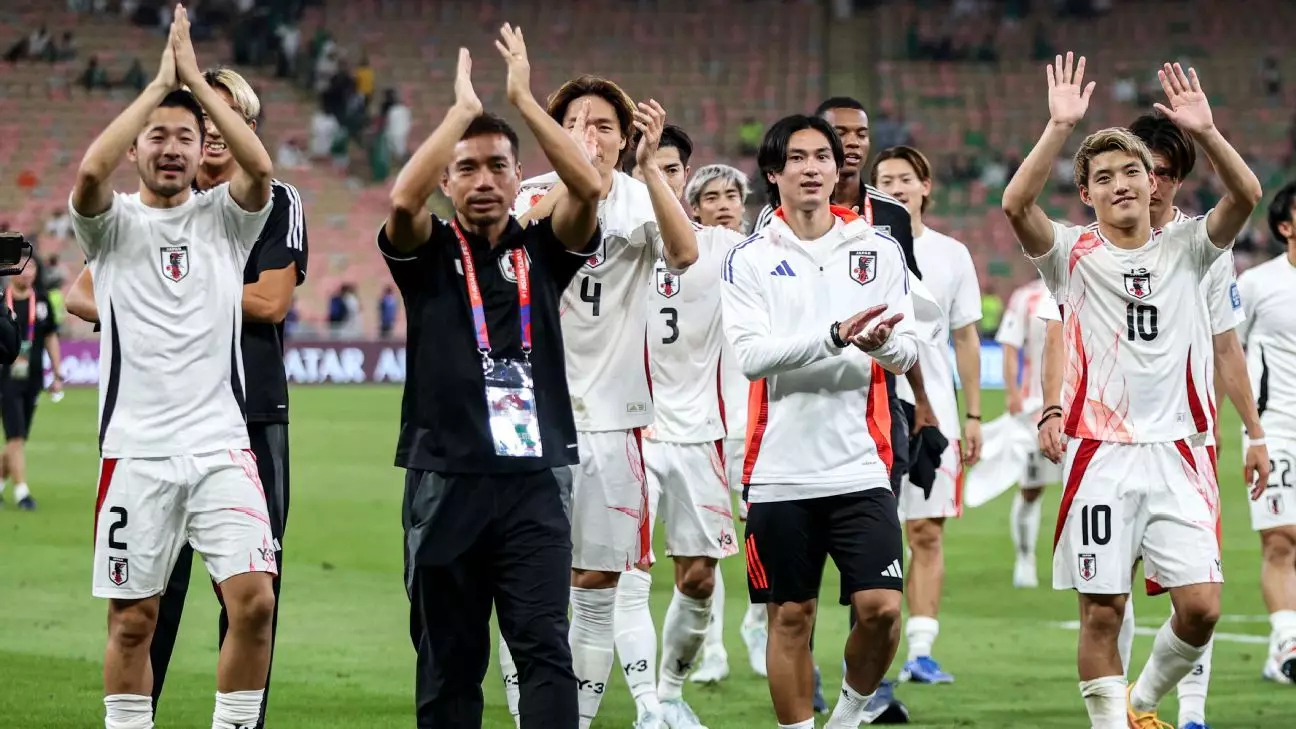In a world where managerial tenures are often fleeting, Japan’s national football team stands out under the consistent guidance of Hajime Moriyasu. Since taking the reins in 2018, Moriyasu has navigated the complexities of international football, leading his squad through multiple FIFA World Cup cycles with notable success. This resilience is particularly striking when you consider that, of the 32 coaches present in Qatar for the last World Cup, only seven still hold their positions. Notable among them is Moriyasu, who, despite facing challenges, has cemented his reputation at the helm of the Samurai Blue.
Moriyasu’s tenure signifies a broader trend in international football, where coaching changes are motivated by immediate results rather than long-term vision. This fleeting nature of coaching roles makes Moriyasu’s ability to maintain his post amidst pressures all the more remarkable. The coach has endured intense scrutiny, especially during the qualification rounds for Qatar 2022. However, a crucial victory against Australia solidified his spot, creating a pathway for Japan to participate in the World Cup.
As the Samurai Blue prepare for a World Cup qualifier against Australia, their current form is nothing short of exceptional. Japan’s track record in the qualification rounds has emerged as a testament to their prowess, boasting a perfect record in both the second and third phases of qualifying. These performances have not only showcased their scoring ability—averaging nearly three goals per match—but have also highlighted their defensive solidity, as they have yet to concede a goal in the second phase.
This discipline and dynamism have been further emphasized with Japan’s recent victories, including a significant 2-0 win against Saudi Arabia in Jeddah, marking a historic moment for the team in the Gulf region. The players themselves—many of whom have made a name for themselves in European clubs—are crucial to this success. The emergence of the so-called “Tokyo Olympics Generation” indicates a new era of talent, ready to step into the shoes of their esteemed predecessors. This blend of youth and experience has allowed Japan to thrive, adapting to modern football’s demands both tactically and physically.
The Japanese Football Association (JFA) has not rested on its laurels, aiming to cultivate a rich footballing culture beyond just elite success. They introduced Japan’s Way, a comprehensive national football philosophy that aims to foster a love for the game at all levels, aspiring to create “10 million football families.” This vision reflects a commitment to developing grassroots infrastructure alongside enhancing the national team’s performance.
Emphasizing the importance of community involvement, Japan’s Way recognizes that true progress in football stems from a cultural shift where enjoyment of the sport permeates every layer of society. This drive to transform football from a sport for the few into a widely loved pastime for the many is ambitious but necessary for sustained success. By improving domestic leagues like the J1 League—already considered the best in Asia—the JFA aims to build a foundation that nurtures talent and fosters a deeper appreciation for football.
Looking ahead to the upcoming clash with Australia, a deeper historical rivalry is at play. Though Japan has not lost on home soil to the Socceroos, recent tensions have emerged with Australia attempting to elevate its status in Asian football. The Socceroos have struggled in their past meet-ups with the Samurai Blue, and their recent performance offers little hope for an upset. With their coaching change and inconsistent results, expectations are modest, yet football remains unpredictable.
Taking account of Moriyasu’s proven track record—the stability and progress achieved during his administration—Japan has built a palpable momentum. These fixtures serve not only as opportunities to affirm their dominance within Asia but also as a barometer for their readiness to challenge for the broader ambitions defined in Japan’s Way. It is this blend of aspiration, talent, and tactical acumen that positions Japan as a potential trailblazer in breaking the European and South American duopoly in international football.
The journey of Hajime Moriyasu and his squad paints a portrait of hope and ambition for Japanese football. As they forge ahead with their eyes set on greater achievements, the Samurai Blue epitomize resilience in sport and society. A win against Australia would not only be a testament to their preparation but would also solidify Japan’s standing as a formidable force in Asian football and beyond. With unwavering support from their fans and a forward-thinking approach to development, the horizon looks bright for Japanese football—a journey that fans around the world will eagerly watch unfold.

